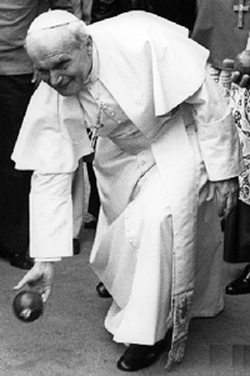 You can think of modern bowling as a distant cousin of bocce. In England, they have "bowls", a lawn version of the game using a flattened ball which is rolled like a wheel (bocce balls are always spherical). The Latin word bottia (ball) is the root of the Italian word boccia or Bocce. Latin also used the word boulles (balls), hence the name bowls for the British form of the game, and in France the game of Boules. The name pétanque is also used in Provence in the South of France. The word pétanque is derived from a Southern dialect of French meaning "two feet planted", describing the position of feet before tossing the ball. Italian balls are solid and made of wood or a composite and sometimes metal. French boules are made of hollow metal. During a game a ball is either rolled or tossed underhanded down a long lane with the aim of coming to rest near a smaller target ball called a pallin0 or boccino (in France it's called the cochonnet or "piglet"). Some form of bocce is played in more countries than any other ball game, with the exception of soccer. Still, Romans are the ones who spread the popularity of the game throughout the Roman Empire, which during this period encompassed vast areas of Europe, Asia and North Africa. Many people, such as Galileo and DaVinci played bocce during the Renaissance--seeing its benefits to mind and body--and others such as Emperors, Admirals, Generals, poets, sculptors, and scientists all played the game. Bocce was also exported to many countries around the world by Italian migrants and still is popular their descendants with bocce courts and clubs throughout the world. 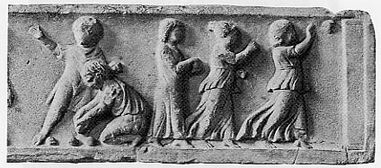 Romans playing bocce Romans playing bocce Bocce in its current form was played in 264 BC during Rome's Punic Wars against Carthage. Teams of 2, 4, 6 or 8 men were formed. Soldiers threw a small stone "leader" and threw it first. Then larger stones would be thrown at the "leader" and the stone coming closest to it would score. The game relaxed troops and gambling was a pressure release, taking their mind off the stress of war. Men played in teams, honing their military strategic thinking as they played. No one really knows how old Bocce is. There were stone balls found in Turkey that date to 9000 BC. Some say Bocce came from Egypt about 5200 B.C., but others say that Greece was its birthplace around 600 BC. When you really think about the simplest game a child can play--tossing a stone--you might think of Bocce as the very first game man ever played. Even the child's game of Marbles is based on Bocce. 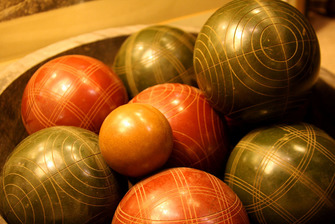 When I was a boy, we'd visit my Aunt Antoinette and Uncle Sal in their Hoboken rowhouse in the summer. To keep cool, they always gathered down in the subway-tiled basement level where it was cool and big pots of Sunday Gravy and pasta awaited the mouths of hungry cousins and grown-ups alike. But what I liked best was going out in their back yard past the tomato plants towering over me and through an arbor to where the court was--the bocce court. I'd watch my Dad and Uncle Sal and other neighborhood gents play and argue all afternoon. They'd drink wine in little jelly glasses and pop out small measuring tapes or yardsticks when it was too hard to tell which ball was closest and who was the winner.. At times they'd give us kids a try... 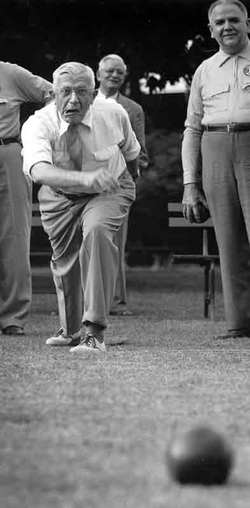 RULES AND PLAY: Bocce is traditionally played on natural soil and asphalt courts 27.5 metres (90 ft) in length and 2.5 to 4 metres (8.2 to 13.1 ft) wide. Traditionally, the top surface of a gravel court has a very smooth and level layer of compacted limestone dust or crushed oyster shells. Backyard courts can be smaller... typically 60' x 12', but smaller court sizes of 30' x 6' are fine if spaces is limited. Bocce balls can be made of metal or various kinds of plastic. A game can consist of two players, or two teams of two, three, or four. A match is started by a randomly chosen side being given the opportunity to throw a smaller ball, the jack ( or boccino or pallino), from one end of the court into a zone 5 metres (16 ft) in length, ending 2.5 metres (8.2 ft) from the far end of the court. If the first team misses twice, the other team is awarded the opportunity to place the jack anywhere they choose within the prescribed zone. The side that first attempted to place the jack is given the opportunity to bowl first. Once the first bowl has taken place, the other side has the opportunity to bowl. From then on, the side which does not have the ball closest to the jack has a chance to bowl, up until one side or the other has used their four balls. At that point, the other side bowls its remaining balls. The team with the closest ball to the jack is the only team that can score points in any frame. The scoring team receives one point for each of their balls that is closer to the jack than the closest ball of the other team. The length of a game varies by region but is typically from 7 to 13 points. Players are permitted to throw the ball in the air using an underarm "lobbing" action. This is generally used to knock either the jack or another ball away to attain a more favorable position. Tactics can get quite complex when players have sufficient control over the ball to throw or roll it accurately. You'd be amazed at some who can lob a ball high in the air and drop it knocking the pallino right out of play--while their ball lands without rolling. Here is a link to a site that walks you through the planning and construction of a great bocce court. I've always dreamed of having a bocce court, but at least we have a couple of sets of balls and play on our lawn. Lucas is surprisingly good at the game. So, pick up a set of bocce balls and try it out with your family and friends. It's not just a great game... it's a great tradition. The oldest game in the world... --Jerry Finzi If you enjoyed this post, please LIKE it and invite your friends to check out Grand Voyage Italy. Ciao! Copyright, Jerry Finzi, Grand Voyage Italy 2015-2016 - All rights reserved
4 Comments
|
Categories
All
Archive
June 2024
|


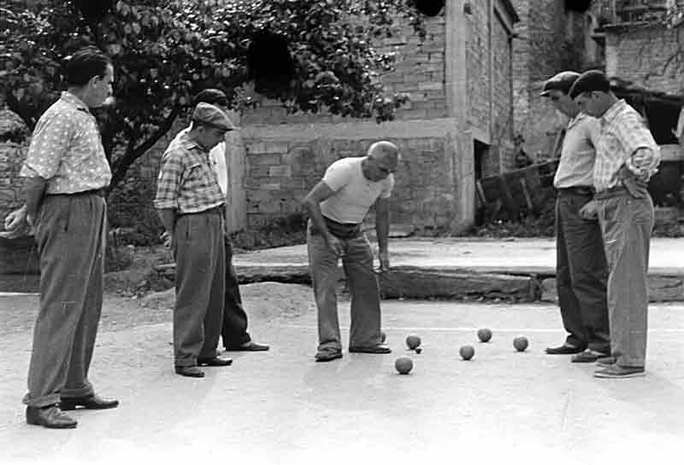
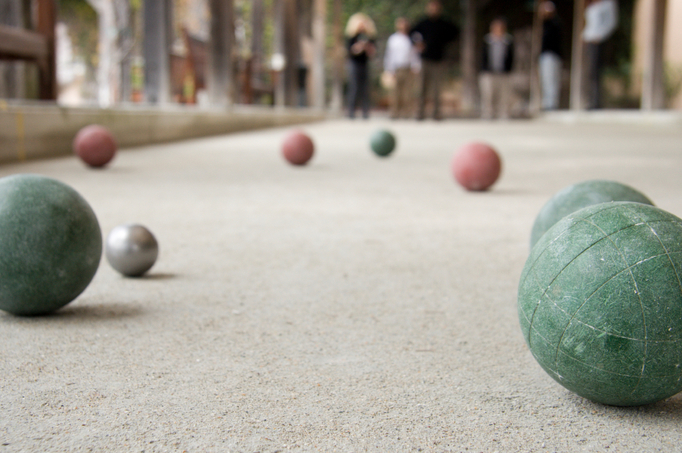
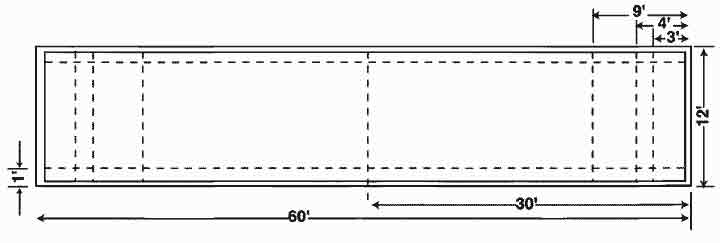
 RSS Feed
RSS Feed
